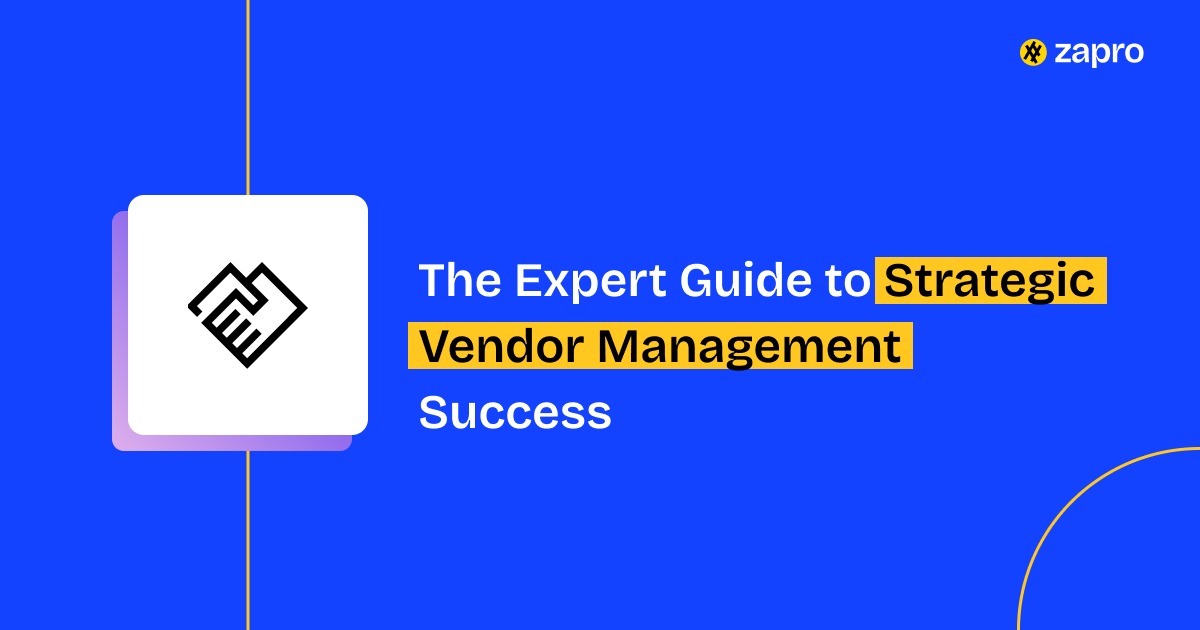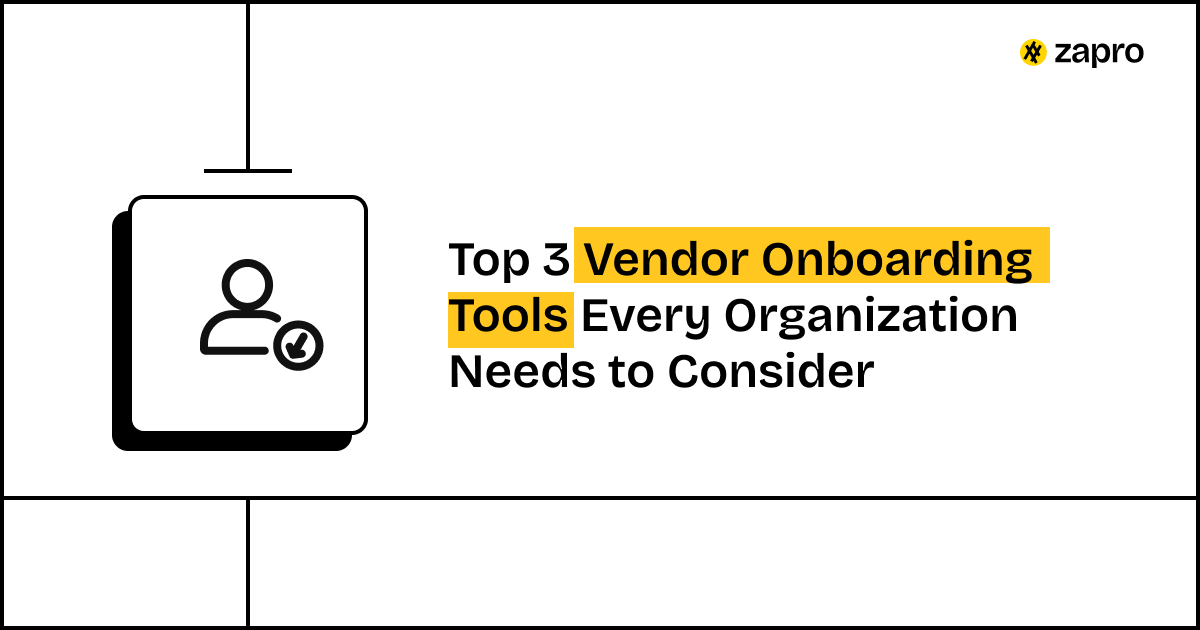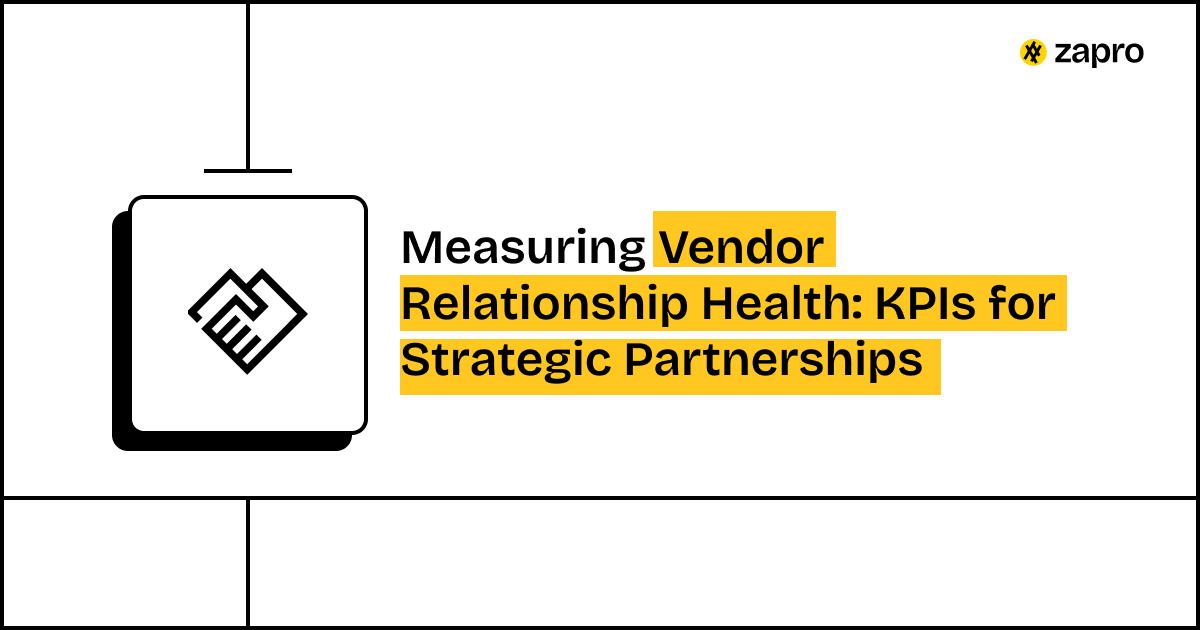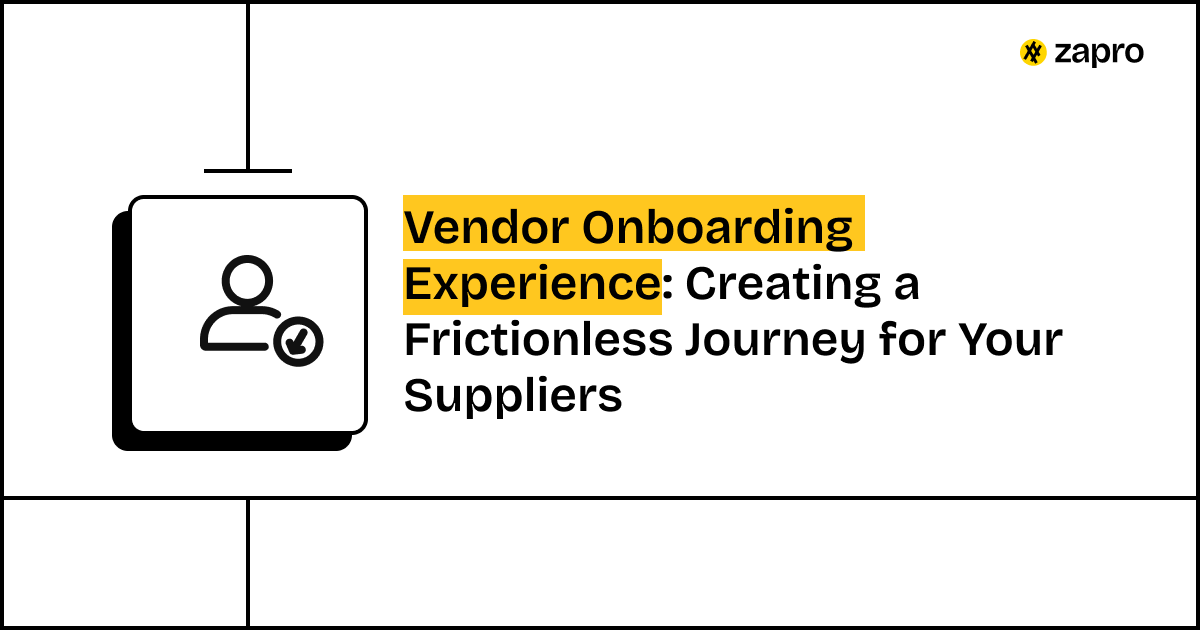What is strategic vendor management?
The definition of strategic vendor management exists as a method to create enduring value-based relationships with vendors.
The practice of strategic vendor management establishes a systematic method to develop enduring partnerships with vendors that deliver value. The approach surpasses basic vendor oversight which focuses on price and contract adherence by making sure vendors work toward organizational objectives including innovation and risk management and regulatory compliance.
The process requires vendors to receive strategic categorization followed by performance tracking from the beginning to the end of supplier lifecycle management.
The level of governance and collaboration needed for core system IT vendors exceeds what is required for non-critical suppliers with low risk.
The implementation of vendor relationship management platforms and supplier management software represents modern practices in this field.
These solutions provide procurement teams with better vendor visibility through centralized data management and evaluation streamlining which transforms vendors into strategic partners instead of external service providers.

Effortless Vendor Management
Keep vendor data organized, onboard suppliers easily, and track performance in one place.
Why it matters in modern procurement
Modern procurement teams need to achieve more than just cost reduction because their role now includes supply chain protection and regulatory compliance and market leadership development.
So, the framework of strategic vendor management enables organizations to fulfill their current business requirements.
Here’s why it matters:
- The practice of structured vendor oversight enables organizations to detect potential risks in their supply chains at an early stage which allows them to create backup strategies.
- The financial sector together with healthcare and IT require strict compliance standards for their operations.
- A vendor management audit program implemented within organizations helps minimize both financial penalties and damage to their reputation.
| Over 60% of organizations experienced a third-party cyber incident in the past year, demonstrating that early risk detection and contingency planning are crucial to maintaining supply chain stability and business continuity. – dnb.com |
- Organizations can access new capabilities through their vendors who specialize in IT vendor management and SaaS solutions. Organizations can achieve co-innovation success by treating their vendors as strategic partners.
- The combination of supplier information management platforms and vendor management KPI tracking systems provides procurement leaders with essential data to assess vendor performance and make better strategic choices.
- Organizations achieve strategic vendor management to transform vendors from cost centers into strategic partners who enhance their market resilience and regulatory compliance and business competitiveness.
Vendor lifecycle vs. strategic vendor management: What’s the difference?
The process of vendor management through the vendor lifecycle differs from strategic vendor management practices. The vendor lifecycle represents a sequence of vendor development stages yet strategic vendor management functions as an independent method to optimize vendor value at each stage.
1. The vendor lifecycle
The vendor lifecycle operates as a transactional framework which includes multiple stages. The process includes three main stages which are Onboarding followed by Performance monitoring and then Renewal or exit.
- Onboarding – The process begins with vendor onboarding which includes verification steps and contract establishment and compliance assessment.
- Performance monitoring – The system tracks delivery performance together with cost management and service level maintenance during the performance monitoring stage.
- Renewal or exit – The organization determines whether to maintain the current vendor relationship or start new negotiations or find alternative suppliers during the renewal or exit phase.
The process maintains consistency and control yet operates as a system that focuses exclusively on administrative tasks and regulatory compliance.
2) Strategic vendor management
The vendor lifecycle management process under strategic vendor management requires organizations to develop specific approaches for vendor management. It involves:
- Segmentation – The approach focuses on differentiating between essential vendors who deliver critical IT services and innovative partnerships and basic suppliers that present minimal risks.
- Collaboration – The approach involves creating strategic partnerships which help organizations achieve their innovation targets and cost reduction goals and sustainability initiatives.
- Proactive risk management – The proactive risk management system tracks vendor health status to detect potential operational disruptions from supplier concentration before they occur.
The lifecycle management system focuses on process adherence yet strategic vendor management focuses on developing enduring business value.
Learn more about Ivalua Alternative.
Why the distinction matters
The lifecycle system becomes limited to basic paperwork and scorecard tracking when vendors receive no strategic direction. Strategic vendor management enables organizations to use the lifecycle as a tool which enhances their operational resilience and compliance and market competitiveness.
The integration of supplier evaluation tools within performance monitoring systems enables organizations to detect both potential risks and innovative possibilities during SLA tracking.
Organizations that achieve the best results implement both lifecycle management and strategic vendor management as separate yet interconnected systems. The operational foundation of lifecycle management supports strategic vendor management which directs all stages to achieve corporate targets.
Strategic vendor management: What are the key challenges and risks?
The implementation of strategic vendor management faces multiple obstacles despite proper intentions. Organizations face ongoing difficulties when they attempt to shift from transactional oversight to strategic vendor management because of persistent obstacles and potential risks. The identification of these issues at an early stage enables organizations to develop enhanced practices.
1. Data accuracy and visibility
The procurement teams handle information that exists in multiple systems which often contain outdated or fragmented data. The lack of dependable supplier information management systems prevents organizations from assessing vendor performance and monitoring compliance standards.
Decision-making becomes less effective because of insufficient data quality.
2. Supplier concentration risk
The heavy dependence on few essential vendors makes businesses more susceptible to risks. Operations face major disruptions when one essential supplier fails because of financial instability or geopolitical events or non-compliance issues. The current global supply chain environment faces its most significant threat from supplier concentration.
3. Compliance and regulatory pressure
The finance sector together with healthcare and IT industries experience increasing regulatory requirements. The vendors need to fulfill multiple requirements which include cybersecurity standards and data privacy rules and sustainability standards and ethical sourcing protocols. Organizations face penalties and damage to their reputation when they lack a vendor management audit program to perform structured oversight.
4. Cost vs. value trade-offs
Organizations frequently make the mistake of prioritizing cost reduction above all else. The pursuit of cost reduction should never compromise the delivery of high-quality products and innovative solutions and supply chain stability. The implementation of strategic vendor management needs organizations to achieve short-term cost savings while developing long-term value generation.
5. Global supply chain disruptions
External events such as pandemics and trade restrictions create rapid supply chain disruptions that affect all businesses. Organizations that lack vendor management strategies which include risk assessment and supplier diversification and emergency planning remain vulnerable to supply chain disruptions.
6. Cultural and collaboration barriers
The success of strategic vendor management depends on effective collaboration but organizations frequently encounter cultural differences and performance mismatch and trust breakdowns. The absence of systems that promote open communication and common objectives prevents vendors from advancing beyond basic transactional relationships.
Strategic vendor management: 7 key benefits
Strategic vendor management provides organizations with three main advantages which include cost reduction, innovation development, and risk management and regulatory compliance.
Organizations achieve extensive benefits from strategic vendor management when they execute it properly. Organizations gain complete control over their costs while minimizing risks and maximizing innovation through their vendor network.
1. Cost efficiency with control
The strategic management of vendor management enables organizations to maximize their spending while maintaining high-quality standards. Organizations achieve better cost management through vendor management SaaS tools and KPI-based negotiations and contract consolidation which reveal additional savings potential.
2. Stronger risk management
The implementation of a proactive framework helps organizations protect themselves from vendor-related risks which include supply disruptions and non-compliance issues. The combination of risk mapping and vendor diversification and supplier evaluation software enables procurement teams to detect potential threats before they become major issues.
3. Compliance and governance
A vendor management audit program with embedded controls helps organizations maintain compliance with regulatory requirements and ethical standards and sustainability standards. The implementation of this system protects organizations from penalties while building better relationships with stakeholders through enhanced reputation.
4. Innovation and value creation
Strategic vendors function as innovation partners who provide more than basic supply services to organizations. Organizations that work closely with their IT vendors can speed up technology adoption and create joint solutions which help them stand out in competitive markets.
5. Alignment with business goals
The correct supplier management process enables vendor strategies to achieve organizational targets that include ESG initiatives and digital transformation and long-term business resilience. Strategic vendor management transforms vendors from transactional suppliers into essential business partners.
6. Supplier performance improvement
The implementation of strategic vendor management enables organizations to monitor vendor performance at regular intervals. The inclusion of supplier evaluation within the cycle creates performance-based incentives which drive vendors to deliver better quality and on-time delivery results.
7. Stronger collaboration and trust
The process extends beyond contract management because it builds essential relationships between organizations. The combination of scheduled assessments and collaborative planning and open dialogue between organizations creates vendor partnerships that lead to increased dedication toward your business success. Supplier relationship management software serves as a key component for achieving this outcome.
Strategic vendor management framework
A strategic vendor management framework enables organizations to transition from unorganized oversight to a systematic value-based program structure. The framework outlines the process for vendor classification, management, and performance assessment throughout the organization.
The absence of this framework causes procurement teams to handle vendor problems through reactive measures instead of leading their vendor partnerships.
Core components of the framework
1. Vendor segmentation
The value of vendors differs from one another. The organization should divide vendors into groups according to their spending levels, operational importance, and strategic worth. The management approach for critical IT vendors who support your infrastructure differs from the approach for low-risk office supplies vendors. The process of segmentation enables organizations to allocate resources effectively while determining appropriate vendor engagement methods.
2. Governance and policy
The organization needs to create specific guidelines which outline vendor acquisition procedures, vendor performance targets, and regulatory compliance standards. The implementation of a vendor management audit system with defined protocols helps organizations maintain regulatory compliance and internal standards while minimizing risks.
3. Performance and KPI tracking
Establish specific vendor management KPIs which include cost savings, delivery performance, risk scores, and innovation contribution for regular measurement. The use of supplier evaluation software and vendor management SaaS platforms enables organizations to monitor vendors through centralized systems.
4. Collaboration and relationship building
Strategic vendors need to receive treatment as business partners. The framework needs to promote joint planning activities, open reporting practices, and collaborative innovation targets between partners. Supplier relationship management software functions as a key tool to support collaborative activities between organizations.
5. Risk management and resilience
The system needs to detect and track three main, very important risks: supplier concentration, financial stability, and geopolitical exposure.
The system requires you to do contingency planning to maintain operational continuity when essential vendors become unavailable.
6. Continuous improvement
The framework needs to remain dynamic instead of fixed. It enables organizations to conduct periodic assessments and gather feedback, which lead to enhanced policies, better performance, and stronger partnerships over time.
Strategic vendor management: 8 best practices you should implement
The success of a framework depends on its consistent application throughout the organization. Organizations achieve measurable results through these best practices which transform their strategic plans into actual outcomes.
1. Segment and prioritize vendors
Every vendor requires different levels of organizational focus. The supplier lifecycle management and segmentation models help organizations identify their essential vendors and their high-risk and transactional suppliers. The organization should allocate its strategic resources to vendors who control business operations and drive growth.
2. Define clear KPIs and accountability
The organization should establish vendor management KPIs which extend past cost performance to include delivery performance, quality standards, compliance requirements, and innovation capabilities. The procurement team should assign specific ownership roles for vendor management and conduct scheduled supplier evaluation assessments to monitor performance.
3. Leverage technology to centralize data
Organizations should implement supplier relationship management software, supplier information management systems, and vendor management SaaS platforms to establish a unified data platform. The centralized data system enables better visibility while streamlining audits and shortening decision-making periods.
4. Build strong relationships, not just contracts
The strategic vendors should experience partnership-level treatment from your organization. The organization should maintain scheduled business review meetings to share strategic plans and support collaborative innovation initiatives. The collaborative method of vendor management produces superior results than basic transactional oversight because it builds stronger trust between partners.
5. Monitor risks continuously
Risk mapping should become an integral part of your vendor management operations. The system should track supplier concentration levels and monitor their financial stability and compliance performance. The implementation of early warning indicators enables organizations to take preventive measures against risks before they develop into operational disruptions.
6. Align with business objectives
The most successful vendor management systems achieve their best results when they help organizations reach their strategic targets including digital transformation, ESG initiatives, and market penetration goals. The connection of vendor strategies to organizational objectives will help obtain leadership support.
7. Institutionalize governance
The organization should create documented policies and establish a vendor management audit system to achieve standardized performance evaluation and compliance assessment. The organization needs clear governance to maintain uniformity between different teams and geographic locations.
8. Foster continuous improvement
The practice of strategic vendor management operates as a dynamic system. The process of practice development includes feedback mechanisms, benchmarking, and peer assessment methods which help organizations improve their methods through time. The organization should support vendors to develop innovative solutions which match the progress of your business operations.
Strategic Vendor Management: Case studies, tools, and templates
Organizations that want to build resilient and innovative supply chains through strategic vendor management need to move beyond theoretical concepts because this approach makes all the difference. The following examples demonstrate how strategic vendor management creates practical results in business operations:
Case studies
- A global enterprise achieved an 18% cost reduction through vendor segmentation and SaaS contract consolidation and vendor management SaaS tool monitoring of renewal periods.
- The healthcare provider integrated supplier evaluation software into its supplier management system to detect risky vendors before they trigger regulatory consequences.
- The retailer joined forces with vendors to implement ESG initiatives through supplier relationship management software which tracked compliance data to achieve both better reputation and financial benefits.
Tools and templates
The following tools and templates will help organizations begin their implementation process. The right enablers help procurement teams speed up their adoption process.
- A supplier information management system enables organizations to store vendor data within a centralized vendor management platform.
- The implementation of vendor management audit programs helps organizations enhance their compliance standards.
- The platform enables vendors to work together through its vendor relationship management system which fosters innovation and collaboration.
- The system includes pre-designed templates which help users evaluate suppliers, track performance metrics, and assess risk levels.
- Zapro serves as the central platform which unifies all necessary features for vendor management, supplier lifecycle tracking, and real-time performance monitoring.
- The platform provides procurement leaders with tools to minimize risks while reducing costs and developing vendor partnerships that generate innovative solutions.
Bringing it all together with Zapro
Organizations need to adopt proactive vendor management because the current business environment demands it due to worldwide threats, strict regulations, and heightened customer expectations. Strategic vendor management enables your organization to transform vendors into business growth collaborators.
Zapro enables you to achieve vendor potential maximization through its comprehensive system.
Ready to turn vendor management into a competitive advantage?
Discover how Zapro’s unified platform helps you cut costs, minimize risks, and build stronger, innovation-driven vendor partnerships.
Improve your supplier relationship in just a click!

Don’t miss our weekly updates
We’ll email you 1-3 times per week—and never share your information.

 Healthcare
Healthcare Financial Services
Financial Services Technology
Technology Venture Capitalist
Venture Capitalist Chief Procurement Officer
Chief Procurement Officer Chief Financial Officer
Chief Financial Officer




